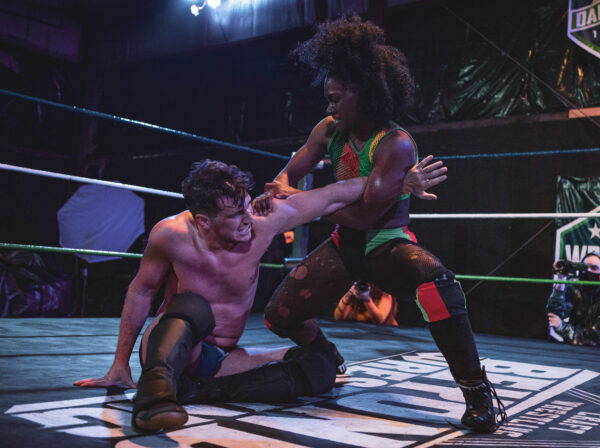
What’s The Deal With The Weekly Ratings? — PWI’s Weekly and Monthly Top 10 Lists Explained

Snippet of Top 10 Heavyweight Rankings for August 20, 2021
FOR ABOUT AS long as we’ve been compiling weekly and monthly wrestling ratings—online and in our magazines—we’ve been asked about the criteria used for determining them. How do we narrow each roster down to a top 10? And, for that matter, how do we choose who ranks in the overall categories?
As with our annual rankings, such as the PWI “500,” the individual rankings are primarily based on what goes on between bells and between the ropes. Per our official ratings page:
Criteria for ranking includes championships held/defended, win-loss record, push, and technical ability.
Some of those criteria are clearer than others. Championships held and defended, as well as wins and losses, are objective metrics. Push is a little more squishy and subjective, as what constitutes a push (or momentum, influence, etc.) will vary from promotion to promotion. Technical ability is another pretty tenuous way to evaluate a wrestler, even if there’s a general consensus about what solid move execution might look like. And, as we know, this is not always the case.
Evaluation becomes even trickier when comparing wrestlers from across promotions, as we do with our top three categories (Heavyweight, Women’s, and Tag Team rankings). That’s a big part of why we have a weekly and monthly ratings committee, along with a team tasked with putting together our triad of annual rankings.
When people ask how we compile the PWI “500,” I like to tell them that we’re using objective metrics, but evaluating those metrics as subjective human beings. Yes, we’ll look closely at win/loss records and lengths of championship reigns. But we’re not running some formulas through a computer programmed to spit out the list. Instead, we try to take into account the meaning behind the numbers—what they represented within a promotion and the industry at large. Randy Orton may have a poorer win-loss record than his AEW equivalent, but he may have main-evented more shows, faced tougher competition, and put on better matches.

Historically, we placed a great deal of weight on WWE’s place at the mountaintop. And, to some degree, we still do. The company is the industry leader throughout the world, and it will likely continue to be for quite some time. But, as a publication that has always viewed wrestling as a sport, we’ve also noted some changes in how it’s being presented. We’ve even expanded our definition of what constitutes a world championship.
The COVID-19 pandemic has leveled the playing field somewhat in that regard, making it so that WWE talent didn’t automatically wrestle dozens more matches (especially televised ones) than any other American talent. Additionally, streaming services like IWTV and WRESTLE UNIVERSE have greatly expanded the influence of independent and international pro wrestling. These changes are all reflected in our ratings.
All of these things are taken into consideration with our weekly and monthly ratings. After all, the “500,” “Women’s 100,” and “Tag Team 50” are, essentially, annual extensions of those regularly updated top 10 lists.
One fairly recent change to our rankings is the blurring and blending of gender lines. Previously, women would only appear on the overall Women’s Top 10 list. In more recent years, women have crossed those imaginary lines and thrived. Some have won heavyweight titles traditionally associated with men. Meanwhile, women’s tag team wrestling has become far more prominent, between WWE’s introduction of multiple tag championships, the revival of the Knockouts tag team belts, and the efforts of promotions like Japan’s World Wonder Ring Stardom.
As those wrestlers have thrived, PWI has tried to recognize their efforts. The “500” is once again open to women who compete in intergender matches, and our tag team rankings are no longer segregated by gender. Since opportunities for women are still fewer, we’ve opted to continue with our overall Women’s rankings, with the caveat that they focus more on women’s divisions and promotions than on any intergender competition.

Is this a perfect system? Surely not. And it’ll likely continue to evolve as the old ways do. In the unlikely event that promotions like WWE, AEW, New Japan, and Lucha Libre AAA get rid of gender distinctions, we would almost certainly follow suit. Until then, we’re doing our best to reflect the current state of the industry.
To that end, we’ve continued to grow our weekly and monthly ratings by adding new categories. For example, we list the top 10 contenders to the IWTV Independent Wrestling World title and have recently added an official countrywide ranking for Australia. If you have any suggestions for our ratings page, feel free to drop me a line at pwi@kappapublishing.com.








